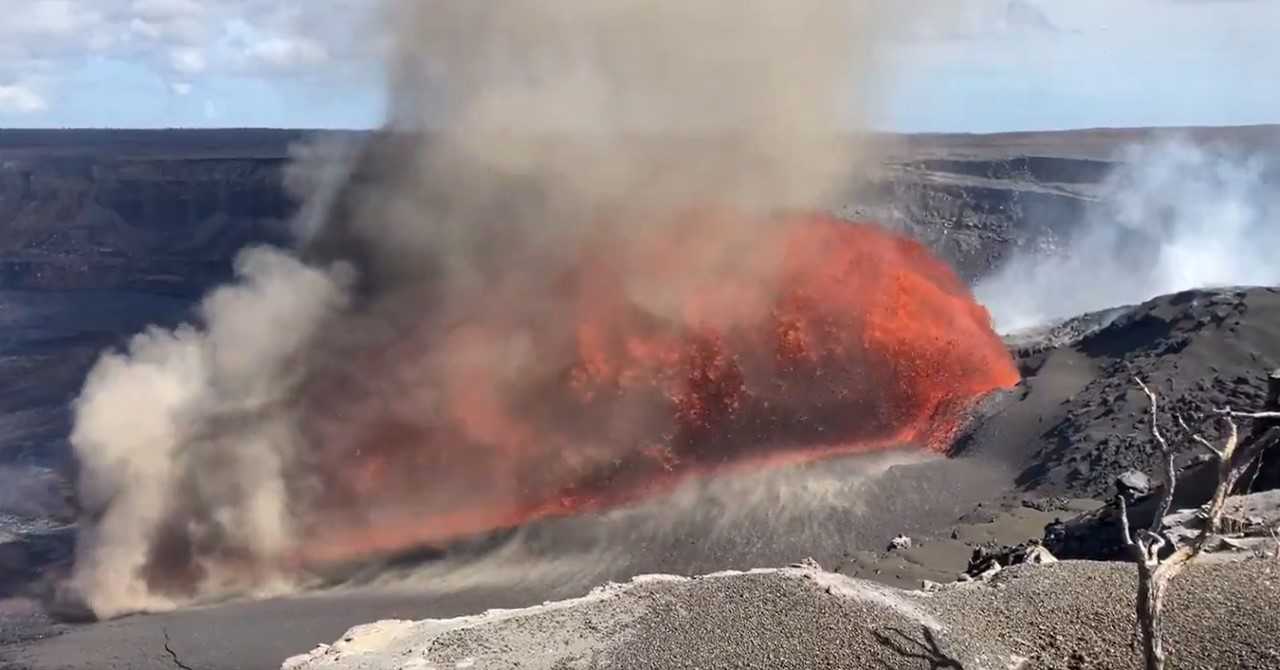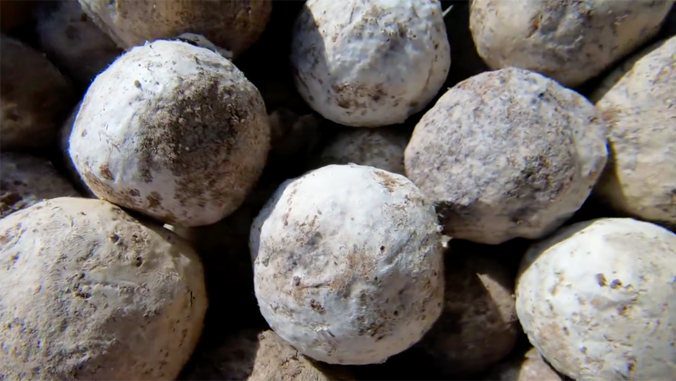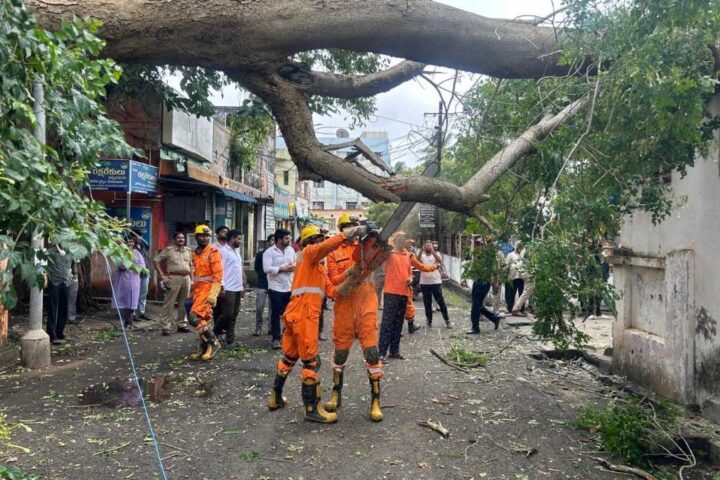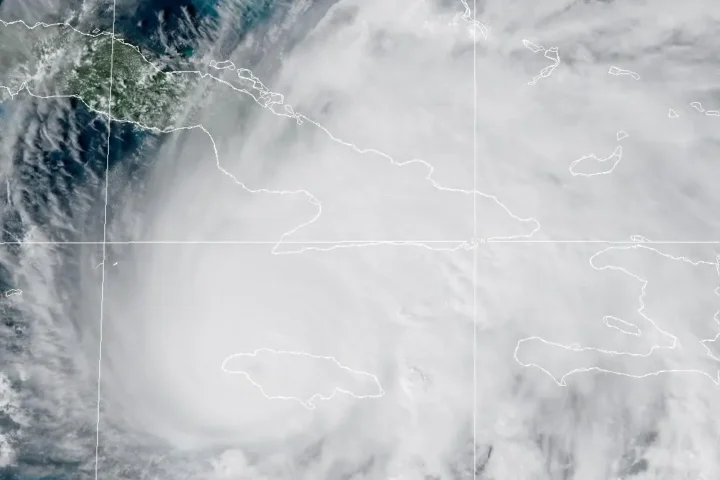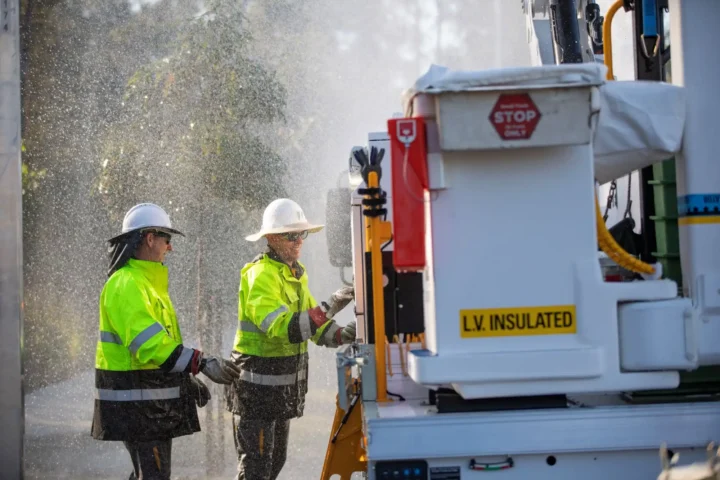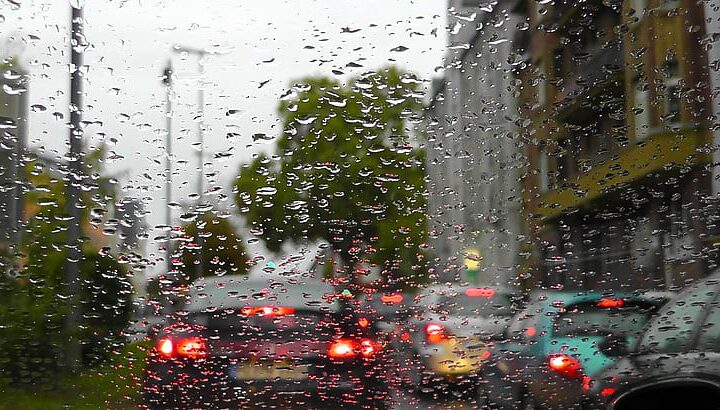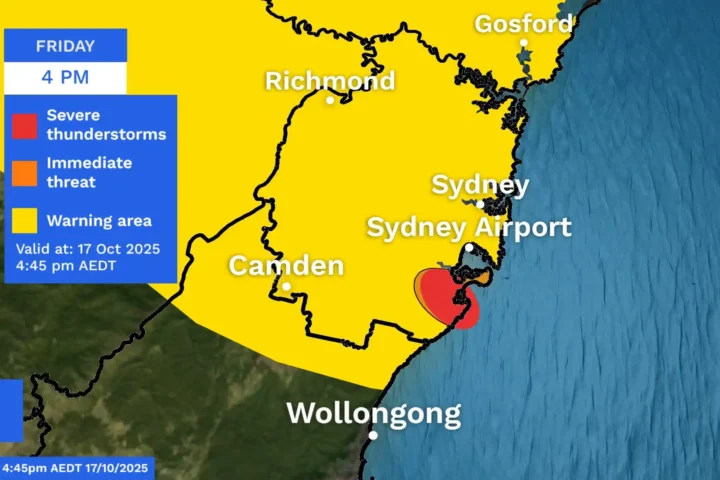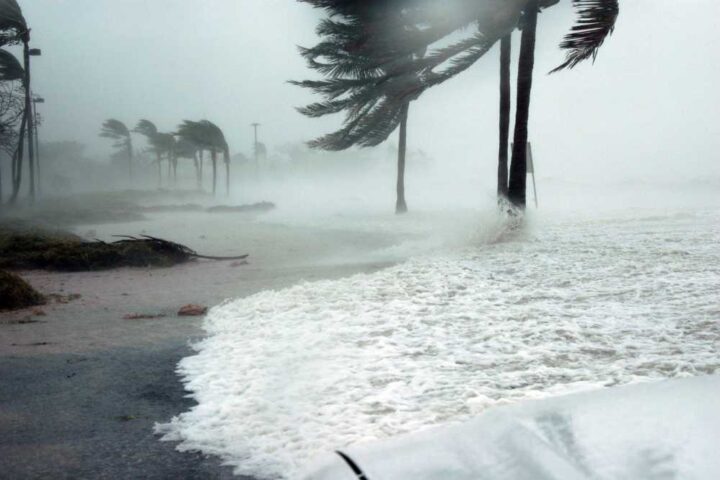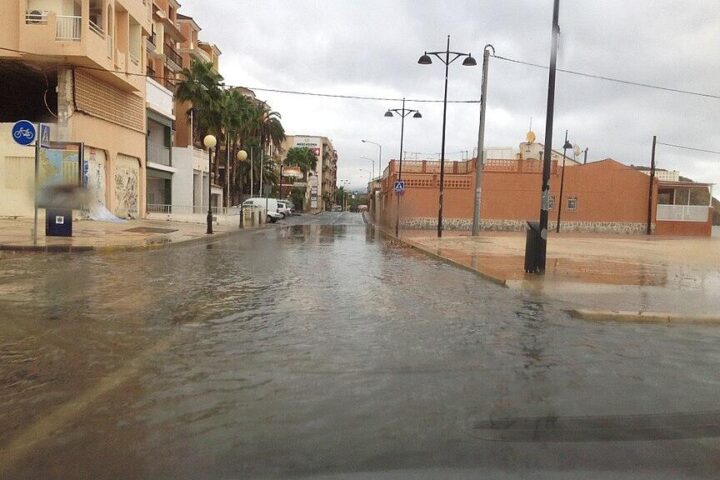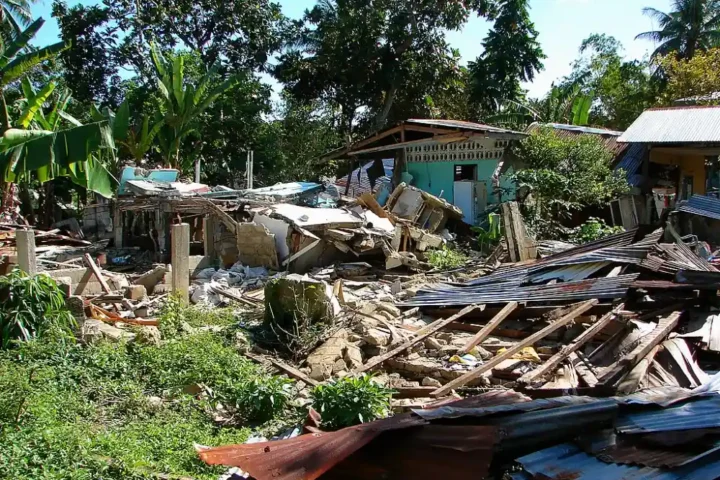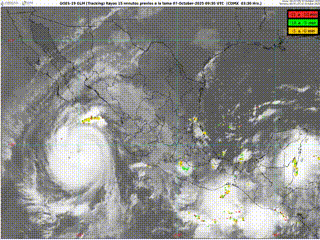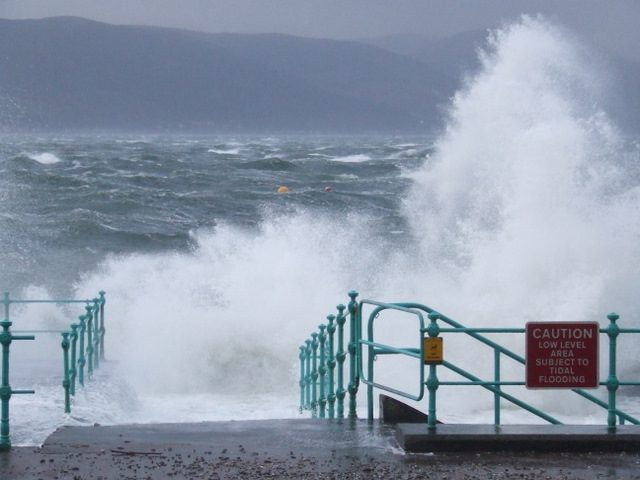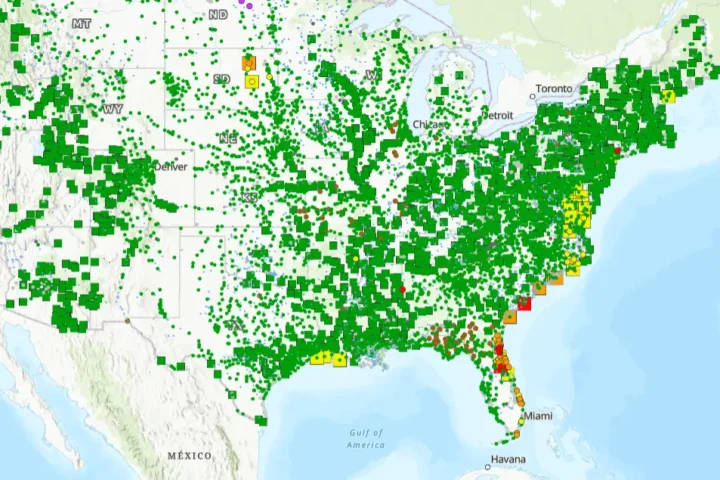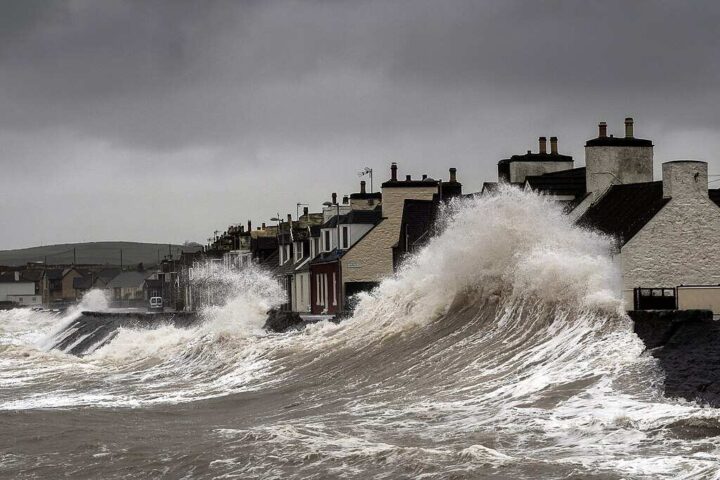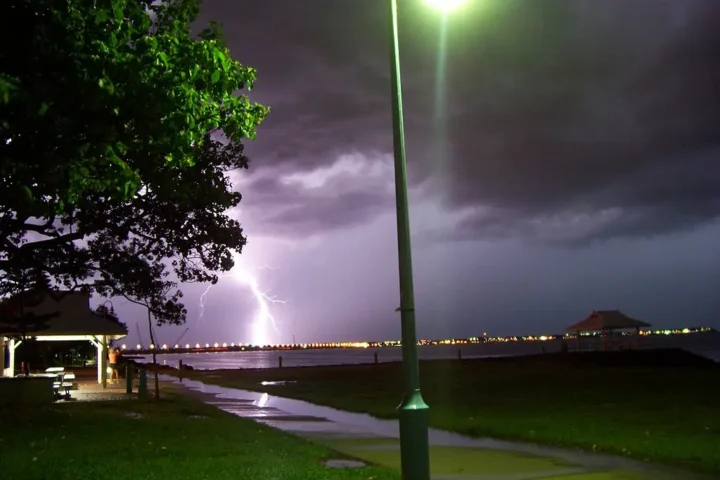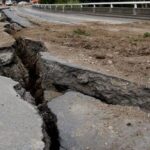Molten rock began fountaining as Kīlauea volcano began its 31st eruption episode Friday, August 22, 2025, at 2:04 p.m. The north vent in Halemaʻumaʻu crater released lava at a 45-degree angle that would measure over 500 feet if straight up.
The USGS Hawaiian Volcano Observatory (HVO) had been monitoring the buildup closely. “Episode 31 was preceded by continuous spatter in the north vent that began at approximately 8:30 a.m.,” HVO reported. By 11:45 a.m., precursory lava overflows started, culminating in the main fountaining event.
Earlier in the day, HVO shared on social media: “Gas piston cycles continue in the north vent. Magma rises to the surface, then spattering and gas release cause the level to drop back down. Rapid inflation continued overnight making it likely that episode 31 will start today or tomorrow.”
The eruption follows what began December 23, 2024. Before each episode, pressure builds beneath the surface. Scientists measured this as just over 22 microradians of inflationary tilt before Friday’s event.
The tilted lava fountain resembles what happened at Kīlauea Iki in 1959 and Mauna Ulu in 1969. USGS scientist M. Zoeller explains the angle likely comes from a temporary obstruction within the vent – similar to placing your thumb over a garden hose.
Beneath Kīlauea’s dramatic surface show lies a complex magma system. Magma accumulates in a lower chamber, is pushed into an upper chamber, and reaches the surface through cracks. When tiltmeters at Uēkahuna switched from inflation to deflation at about 2:00 p.m. HST, it signaled the pressure release as magma escaped upward.
More Posts
Most eruption episodes since December have lasted about a day followed by multi-day pauses.
Northeast winds of 15-20 mph are carrying volcanic gas south and southwest. While the eruption stays inside Halemaʻumaʻu crater within closed areas of Hawaiʻi Volcanoes National Park, the hazards reach farther.
Volcanic gas creates vog (volcanic smog) downwind. Sulfur dioxide emissions typically measure 1,200-1,500 tonnes daily between episodes but jump to approximately 50,000 tonnes per day during fountaining.
Pele’s hair – thin strands of volcanic glass – can travel over 10 miles and cause skin and eye irritation. Other fragments like ash and pumice may fall within about 1 mile (1-2 km) downwind.
For Native Hawaiians, Kīlauea isn’t just a volcano but the home of Pele, the fire goddess. Many leave hoʻokupu (offerings) at designated areas – traditional items include ohelo berries, lei, and chants.
“The most perfect offering is one’s aloha, ha, and olelo. To love a place, and breathe out that love in the form of a spoken promise to cherish and protect it,” explains Hawaiian cultural resource kaahelehawaii.com.
Volcano behavior has changed recently. A new southern fissure appeared during Episode 30 on August 6, suggesting increased pressure as vent elevation rises. HVO notes, “It is possible this could result in permanent change in the vent locations.” The East Rift Zone continues to contract, showing no magma enters that system.
In their weekly Volcano Watch, USGS recently highlighted “the fringes and fractures associated with the new fissure that opened in the south wall of Kīlauea caldera during episode 30 of the ongoing summit eruption,” providing additional insights into the changing dynamics of the volcano.
HVO provides livestream videos for safe viewing. Three webcams capture different angles of the lava fountains, while two more monitor plume height for aviation.
HVO social media updates documented the activity leading up to the eruption. On August 21, they noted: “A short overflow from the north vent at 8:45 to 8:48 pm HST went less than 100 feet. Drainback and fountaining followed the flow, typical of gas piston cycles.” Another post described “Rise and fall of magma accompanied by spattering within the north vent” becoming “highly visible after dark today. These gas piston events are about 10 minutes apart and began around 10 AM HST when the summit began to inflate again.”
The current pattern resembles the 1983-86 episodic fountains that began the Puʻuʻōʻō eruption. Since December 2024, the ongoing episodes have added substantial volumes of new lava to Halemaʻumaʻu crater.
This represents the fourth time in 200 years that Kīlauea has produced repeated high fountaining. USGS maintains a WATCH alert level and ORANGE aviation color code.The eruption continues within Hawaiʻi Volcanoes National Park. Visitors can find updates through USGS webcams and advisories. The volcano’s activity remains confined to Halemaʻumaʻu crater at this time.
